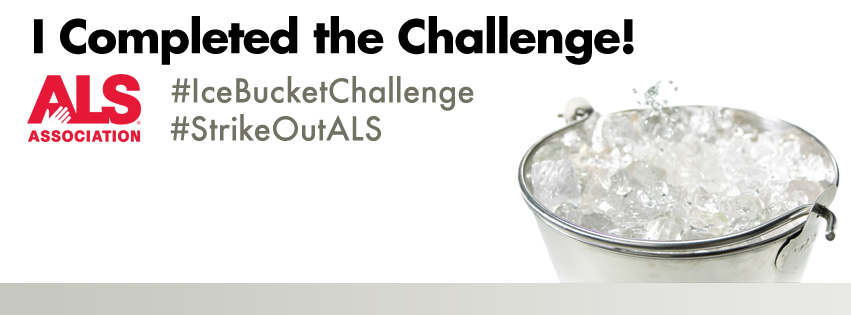 It’s the question that thousands of nonprofit communications and development staff will be asked over the next several weeks:
It’s the question that thousands of nonprofit communications and development staff will be asked over the next several weeks:
What’s our version of the ALS Ice Bucket Challenge?
Of course, the real questions behind that are “How come we aren’t raising a bazillion dollars online?” and “Why can’t we get our supporters to make videos of themselves about our cause and share them with their friends?”
I’ll talk about why I think this worked in just a sec, but first, a few words on the backlash.
Backlash is inevitable.
Whenever something like this goes viral in the nonprofit world, there are always jealous people who will nitpick it to death. Most of the criticism is some version of “But my issue/cause is more important/hurts more people/helps more people, so why aren’t you paying more attention to it?”
I have seen everything from “this is a terrible waste of water” from Californians who are suffering from a drought, to claims that the success of the challenge, happening at the same time as the death of Michael Brown and protests in Ferguson, is just another sign of what a racist nation we are. (See The Difference Between ALS and Ferguson is That One Ill Can Be Cured for an interesting perspective on how both played out on social media.) There are others who are clueless about what actually spurs generosity and philanthropy in people (it’s not economics and logic, folks, no matter how much your wonky brains might wish it were so).
To all of the critics, I say, get off your high horse about how superior you and your issues are, and find a better way to help people understand your issue, and more importantly, what the hell they can do about it.
OK, maybe you are just sick of seeing your feeds taken over by the videos. Yeah, I admit it, I am getting pretty bored with it at this point too, even as my family is about to make one (Thanks a lot, Antionette!)
But, ultimately, this is a huge win for ALS families, plain and simple. See What an ALS Family Really Thinks about the Ice Bucket Challenge and Stop Pouring Ice on Clicktivism (thanks Ritu, for a great post!).
Now back to you and your conundrum about how to replicate this thing.
The Ice Bucket Challenge worked because it was easy empowerment that combined sacrifice and celebration.
Here’s why I think this worked so well . . .
1. It’s empowering. Scientists are the ones who will actually find a cure, but science isn’t cheap. The challenge is an easy way to feel empowered to do something, by helping to raise money for research. This is ultimately behind all successful fundraisers — people are given the feeling that they can do something, that they can change the world.
But there’s more to this . . .
2. It’s universally accessible. You don’t need any special equipment or knowledge. Everyone can find a bucket of ice and dump it on someone’s head.
3. It’s fast and easy. It doesn’t take all day, and next to no planning. Get Ice. Get phone to record. Dump ice. This is where many nonprofit challenges go wrong — they make these things way too complicated. Some people have complained that ice has nothing to do with ALS. I believe those people are over-thinking this one.
But that’s not all . . .
4. It’s a sacrifice. To help someone else, you have to give something of your own. Consenting to being doused with ice water, however silly it may seem, is a sacrifice.
5. It’s also a celebration. What happens to the winning coaches at sporting events? They get a huge bucket of Gatorade and ice dumped on them. So the sacrifice in this case is actually re-creating one of the iconic scenes of success and celebration in our culture since the 1980s.
I believe this combination of #4 and #5, and the sacrifice and the celebration, is what really makes the Ice Bucket Challenge so effective.
Those doused get to revel in being like the champions, in this case sacrificing themselves for a good cause; those dousing get the guilt-free pleasure of inflicting some minor pain on friends and family in the name of awareness-raising and fundraising. It’s a match made in marketing and fundraising heaven.
If you want to try to create an awareness and fundraising challenge of your own, can you hit all five of these buttons? This is not a magic formula, mind you, and there are many successful challenges that are not universally accessible, nor fast and easy (like those involving extreme sports). But hundreds of thousands of people won’t participate in those either, and even those still hit #1, #4, and #5 in some way.
Who Promotes It Matters Too
I’ve focused here on the actual challenge itself, but of course, there was a lot more to the success of this particular campaign for ALS. It’s been going on for many months, but just went viral more recently, when certain people started to promote it. Who promotes it is another critical element.
Note that this was not a formal campaign promoted by ALS staff in any serious way (as far as I’ve heard), but something that people with ALS, their friends, and families made happen.
I’m adding this case study to our next free webinar, How to Raise Awareness for Your Cause on a Budget, on September 3 and I’ll share more advice about “going viral” in that presentation. But I’ll also share the same kind of caution with you that Jeff Brooks does in his post, What a weasel is going to tell you about the Ice Bucket Challenge.
For details on the current results of the Ice Bucket Challenge, see the ALS Association Press Room.
Here’s some additional commentary on why this worked that I think you’ll find interesting . . .
Why The #IceBucketChallenge Works from Network for Good
Is A Downer News Cycle A Factor in the ALS Ice Bucket Challenge Success? by Beth Kanter
Think The ALS Ice Bucket Challenge Is Stupid? You’re Wrong. from Forbes
My take on the ALS #IceBucketChallenge from Social Brite






